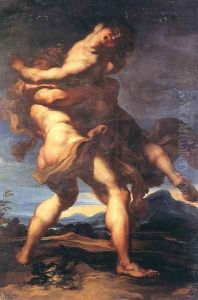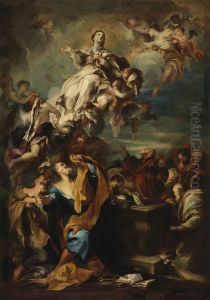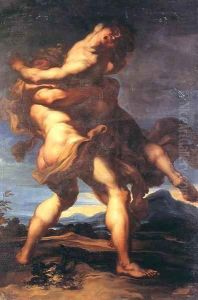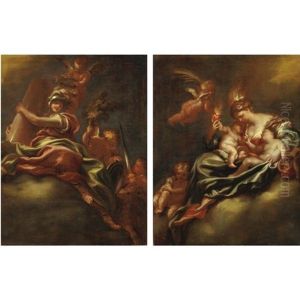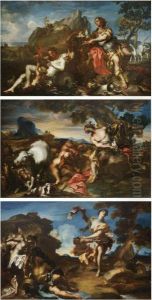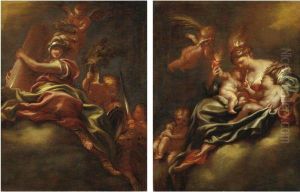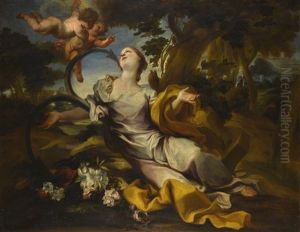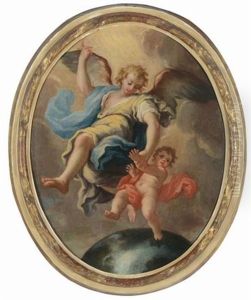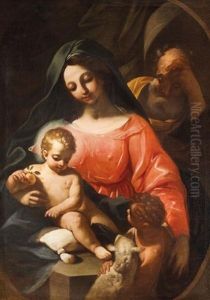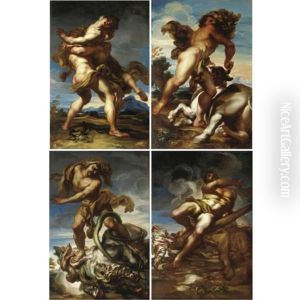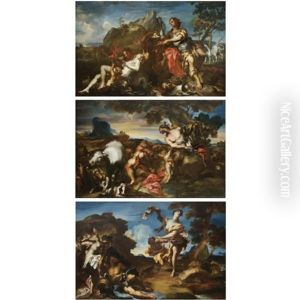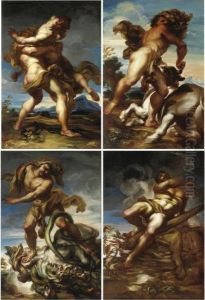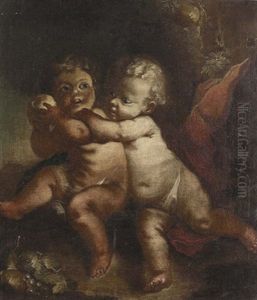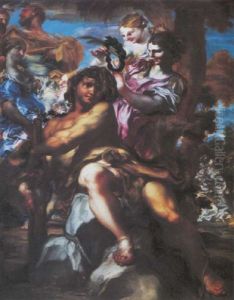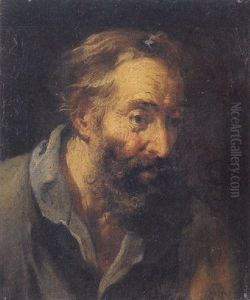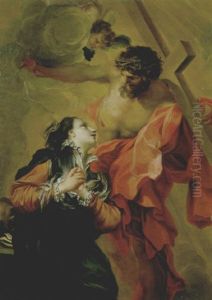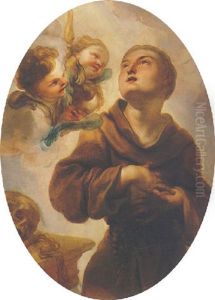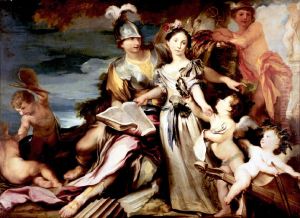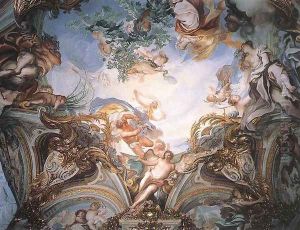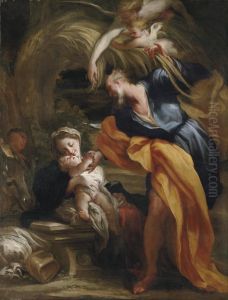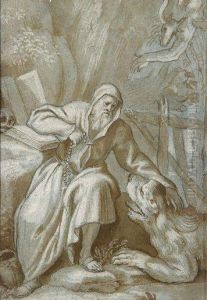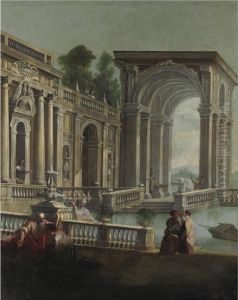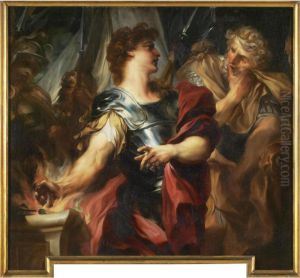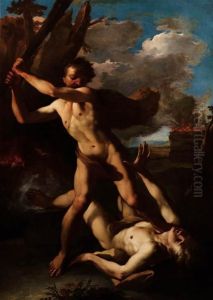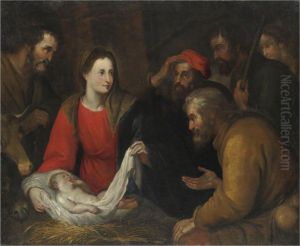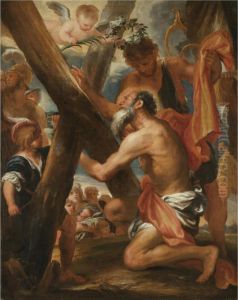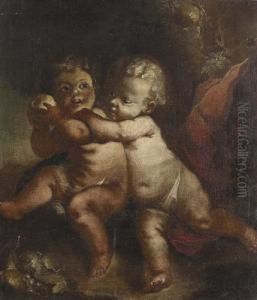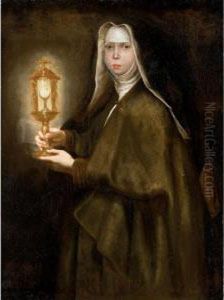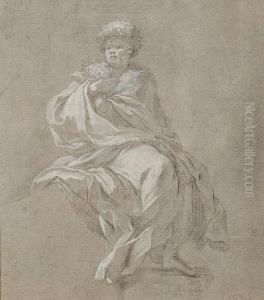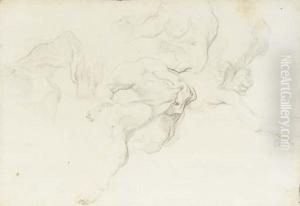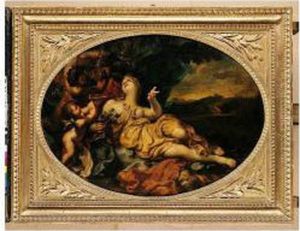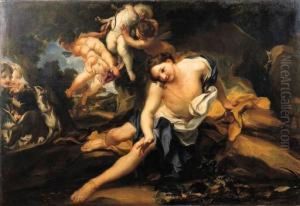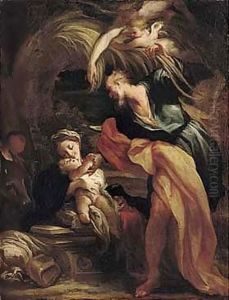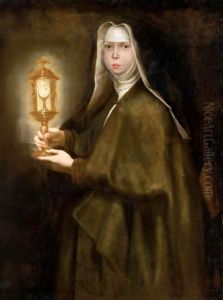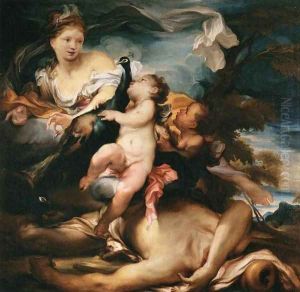Gregorio de Ferrari Paintings
Gregorio de Ferrari was an Italian Baroque painter who was born on July 28, 1647, in Porto Maurizio, Liguria. He is known for his dynamic and elegant style, which was heavily influenced by the Baroque movement that swept through Europe during the 17th century. Gregorio showed an early talent for art and was initially trained by his father, who was a minor painter. He then moved to Genoa, which was a thriving center of art at the time, to continue his studies under the tutelage of renowned artists like Giovanni Battista Gaulli and Domenico Fiasella. In Genoa, Gregorio de Ferrari quickly established himself as a prominent figure within the artistic community. His work was characterized by a graceful use of color and a fluidity of form, which set him apart from his contemporaries. He was particularly adept at fresco painting and was responsible for creating some of the most beautiful frescoes in Genoese palaces and churches. His marriage to Margherita Castello, who was also a painter and the daughter of the famous Genoese artist Valerio Castello, helped him secure important commissions and collaborations. Throughout his career, Gregorio de Ferrari worked on numerous religious and mythological subjects, often incorporating allegorical themes into his compositions. His art was marked by a sense of movement and vivacity, hallmarks of the Baroque aesthetic. Some of his most significant works include the frescoes in the Palazzo Rosso and the decoration of the Santissima Annunziata del Vastato in Genoa. Despite his success, Gregorio de Ferrari remained relatively modest and dedicated to his craft until his death on February 25, 1726, in Genoa. His legacy continued through his students and his son, Lorenzo de Ferrari, who also became a painter.
